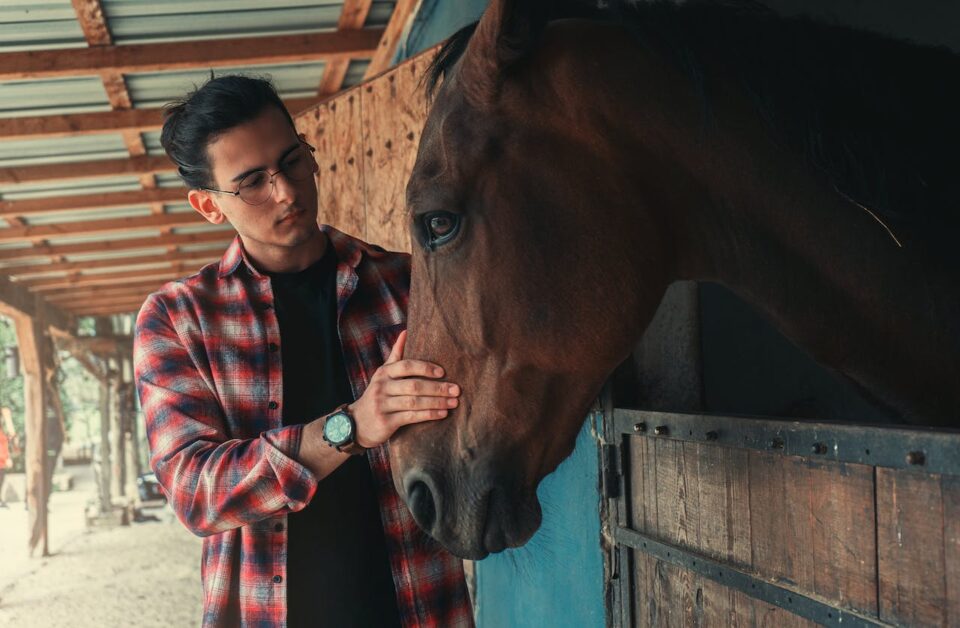Addressing Lameness in Horses: Understanding Causes and Care
For equestrians and horse enthusiasts alike, the sight of a horse moving with grace and power is nothing short of breathtaking. These majestic animals, known for their strength and agility, occasionally face health challenges, with lameness being among the most common yet complex issues. Lameness in horses can stem from a variety of causes, from minor injuries to more intricate underlying health concerns. Understanding the root cause, signs, and the intricacies of this condition is crucial for providing timely and appropriate care.
As horse owners or caretakers, it is our responsibility to ensure the well-being of these magnificent creatures. Whether you’re a seasoned horse owner or someone just starting on this journey, having a deeper insight into lameness, its potential causes, and care strategies can be instrumental in ensuring your horse’s optimal health and longevity. Continue reading for a comprehensive overview of lameness in horses and equip yourself with the knowledge to address and manage this condition effectively.
The Importance of Early Detection
Spotting the Signs
Recognizing the early symptoms of lameness is essential for a successful intervention and a more likely recovery. It’s a common misconception to believe that lameness will always present itself as a clear and noticeable limp; however, that isn’t consistently the case. Many times, the signs of lameness are more nuanced, revealing themselves as a faint reluctance to move, an increased resistance to specific commands, or just a hint of stiffness when the horse is in motion. Those involved in the care of equines, whether riders or caretakers, should strive to be particularly observant, staying vigilant for even the slightest alterations in their horse’s behavior or performance. For instance, if a horse begins to avoid jumping, shows hesitation during canter transitions, or seems to have diminished enthusiasm for their usual tasks, they might be indicating underlying discomfort or pain.
Why Early Detection Matters
Discovering lameness in its initial phases allows horse owners an opportunity to prevent the condition from escalating into a more severe problem. When a concern is identified promptly, the subsequent treatment administered may potentially be more effective, potentially leading to a faster recovery and return to the horse’s standard routines. Not to mention, identifying and addressing problems early on can potentially lead to cost savings by avoiding more extensive treatments or interventions later.
Common Causes of Lameness
External Injuries
Visible physical injuries, such as scrapes, superficial wounds, or puncture wounds, can significantly influence a horse’s movement, culminating in lameness. While external injuries might appear evident, they can sometimes be overlooked, especially if they happen in less conspicuous areas like the hoof’s underside. Conducting consistent checks and ensuring the horse is groomed regularly can aid in early identification of these types of injuries.
Internal Issues
From the inside, lameness might be caused by numerous factors, including conditions like arthritis, inflammation in the tendons or ligaments, or even fractures and specific bone diseases. Some issues, such as arthritis, have a gradual onset and might not be immediately discernible. Prioritizing regular veterinary assessments and staying alert to any changes in the horse’s demeanor or movement pattern can be invaluable in early identification and intervention of these issues.
Related Link: 4 Problems Faced by Active Horses
Preventative Measures

Good Stable Management
Ensuring a tidy, orderly, and risk-free environment for the horse is pivotal in warding off lameness. It’s of utmost importance that the horse’s habitat is devoid of potential dangers like sharp items, areas prone to causing slips, or any other threats that might potentially harm the horse.
Proper Training and Conditioning
Much like human athletes, horses need an appropriately designed training routine to remain at their physical best. Overburdening a horse or urging them past their comfort zone might lead to conditions such as strains, sprains, and other injuries that could cause lameness. Taking steps to guarantee they undergo sufficient warming up prior to vigorous exercises and a proper cool-down phase afterward is essential.
The Role of the Veterinarian
Diagnostic Expertise
The integral part an equine veterinarian plays in addressing lameness is truly paramount. Their specialized training, combined with their hands-on experience, equips them to accurately identify the root cause of the lameness, differentiating between various potential sources that might be causing the horse pain or discomfort.
Treatment and Rehabilitation
After a definitive diagnosis is reached, a veterinarian can suggest a course of action tailored to the horse’s needs. This course of action might comprise medications, structured physical therapy, and in more severe cases, surgical intervention. Beyond the initial treatment, these professionals can provide invaluable advice on how best to guide the horse through its recovery phase, ensuring the horse not only heals but also resumes its activities with minimal chances of future injuries.
Looking for pet care products that may support the well-being of your furry friend? Checkout our selection today!
Addressing Lameness in Horses: Understanding Causes and Care

Lameness in horses, whether caused by external injuries or internal issues, can be a concerning sign for equine caretakers. With early detection being pivotal for effective intervention and recovery, understanding its various causes is of paramount importance. Regular check-ups, grooming, and attentive observation can be invaluable in preventing and treating this condition. Furthermore, while addressing lameness and ensuring a horse’s well-being, considering products that assist in easing joint discomfort can be beneficial. We recommend checking out Gou Gou Pets’s Joint Comforting Shampoo. This Anti-Inflammatory Pet Shampoo is packed with naturally-derived herbal and essential oil active ingredients, which are specially formulated to promote blood circulation, ease joint inflammation, and alleviate joint aches. Backed by meticulous research and development, this shampoo incorporates a blend of clean, antioxidant-rich, herbal, and essential oils to offer the best care for your pets.
Related Link: Common Horse Skin Conditions: Identification and Treatment
~Veterinarian Recommended